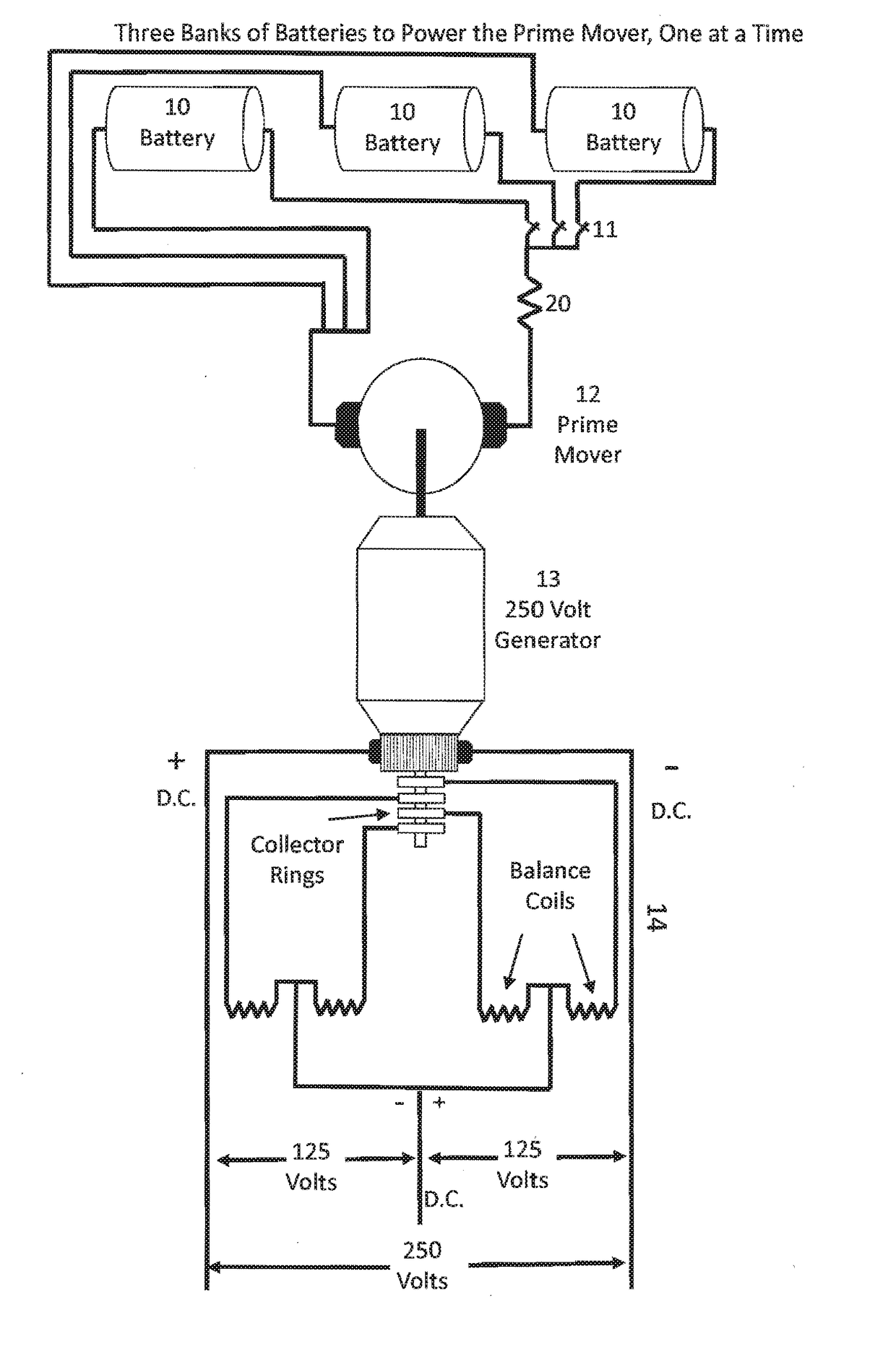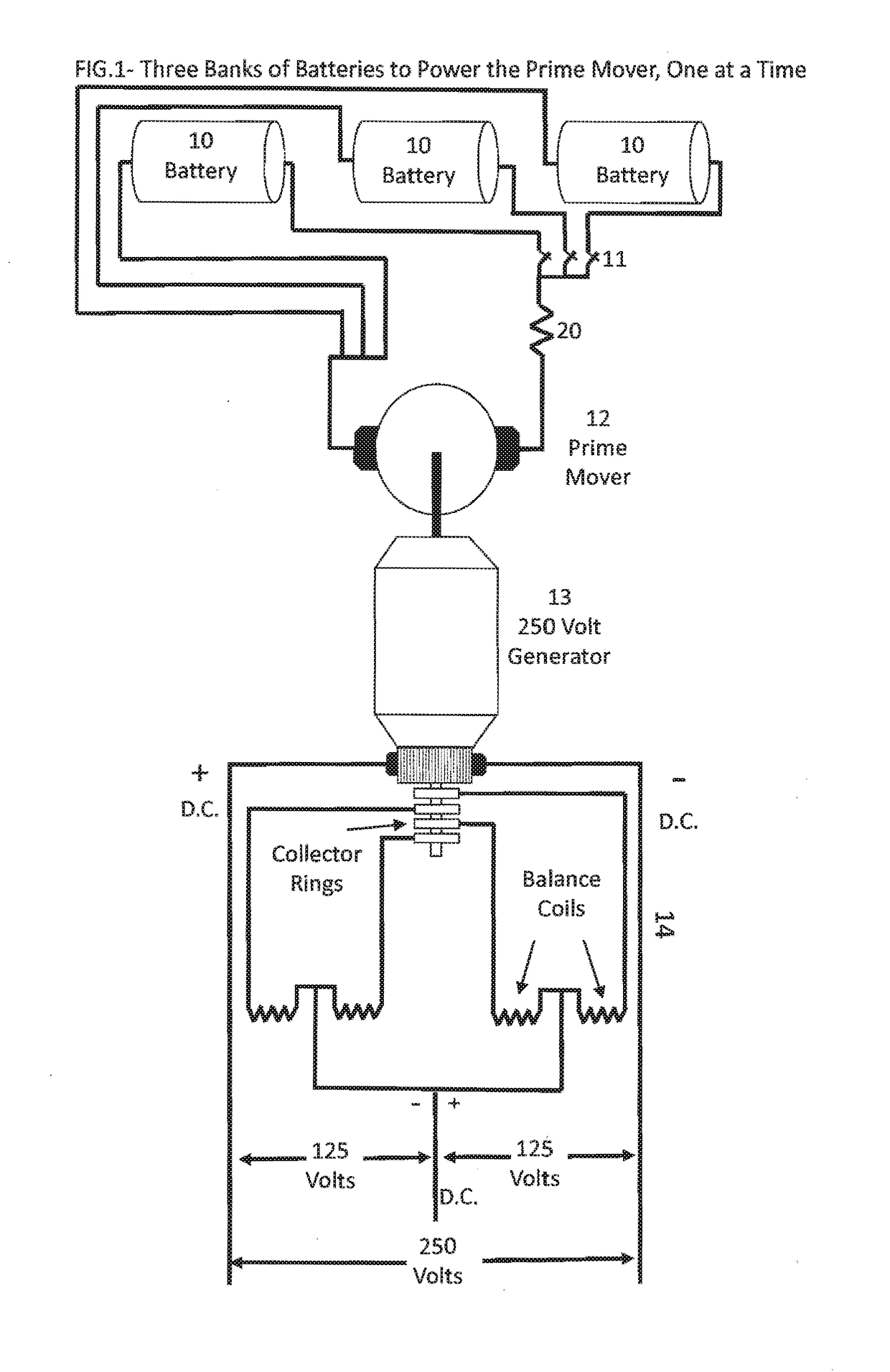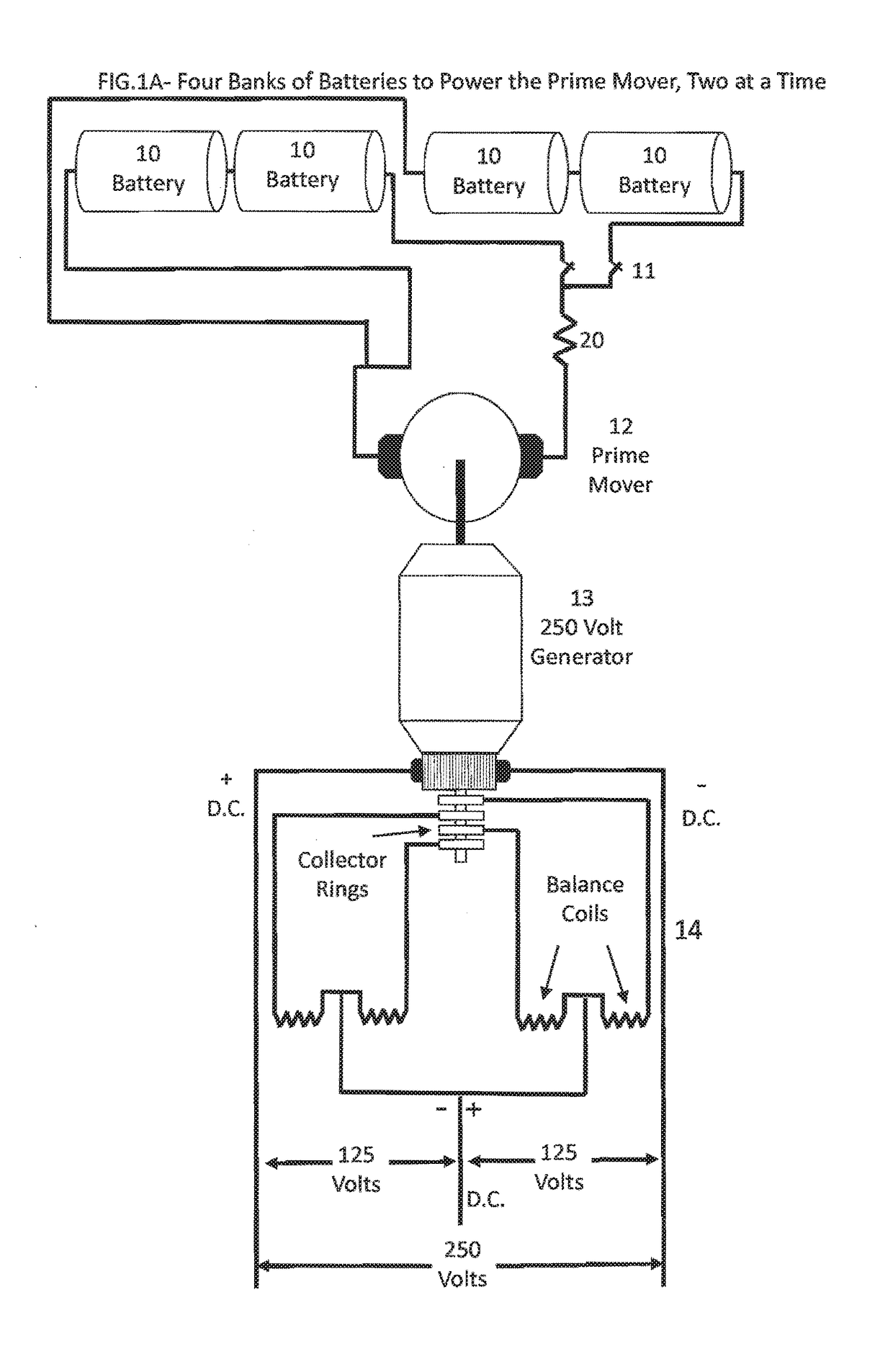Self Charging All Electric Vehicle
- Summary
- Abstract
- Description
- Claims
- Application Information
AI Technical Summary
Benefits of technology
Problems solved by technology
Method used
Image
Examples
Embodiment Construction
[0046]Different types of batteries can be utilized such as: nickel-metal hydride, lithium polymer, lithium-ion, nickel-cadmium alkaline, lithium-iron phosphate, lead-acid, etc. The number of cells will depend on the nominal open circuit voltage per cell. I propose the use of the lead-acid batteries which are the most widely used and the lithium-iron phosphate batteries which are extremely safe and stable to use. Their weight is light and can typically be charged in excess of 2000 times.
[0047]Three banks of batteries each comprised of 58 lead-acid cells can be utilized. While the three banks of batteries, in rotation, provide, one at a time, power to the prime mover motor 12, approximately 116 volts, the other two remain always charged by being connected across the three-wire direct current generator which provides 125 volts between the neutral and either side of the line. The generator also delivers 250 volts to power the traction motor or motors. Under the floating charge method th...
PUM
 Login to view more
Login to view more Abstract
Description
Claims
Application Information
 Login to view more
Login to view more - R&D Engineer
- R&D Manager
- IP Professional
- Industry Leading Data Capabilities
- Powerful AI technology
- Patent DNA Extraction
Browse by: Latest US Patents, China's latest patents, Technical Efficacy Thesaurus, Application Domain, Technology Topic.
© 2024 PatSnap. All rights reserved.Legal|Privacy policy|Modern Slavery Act Transparency Statement|Sitemap



